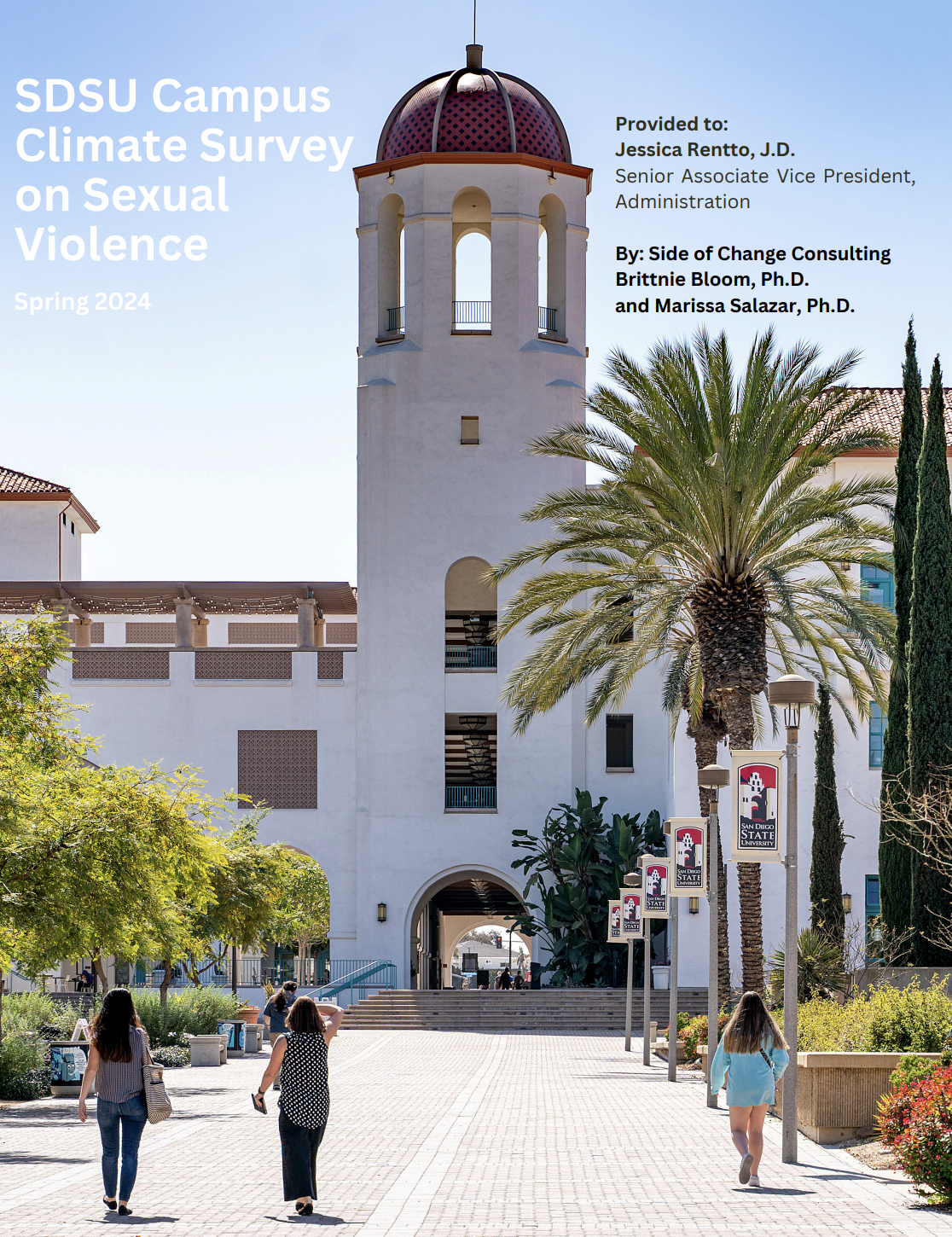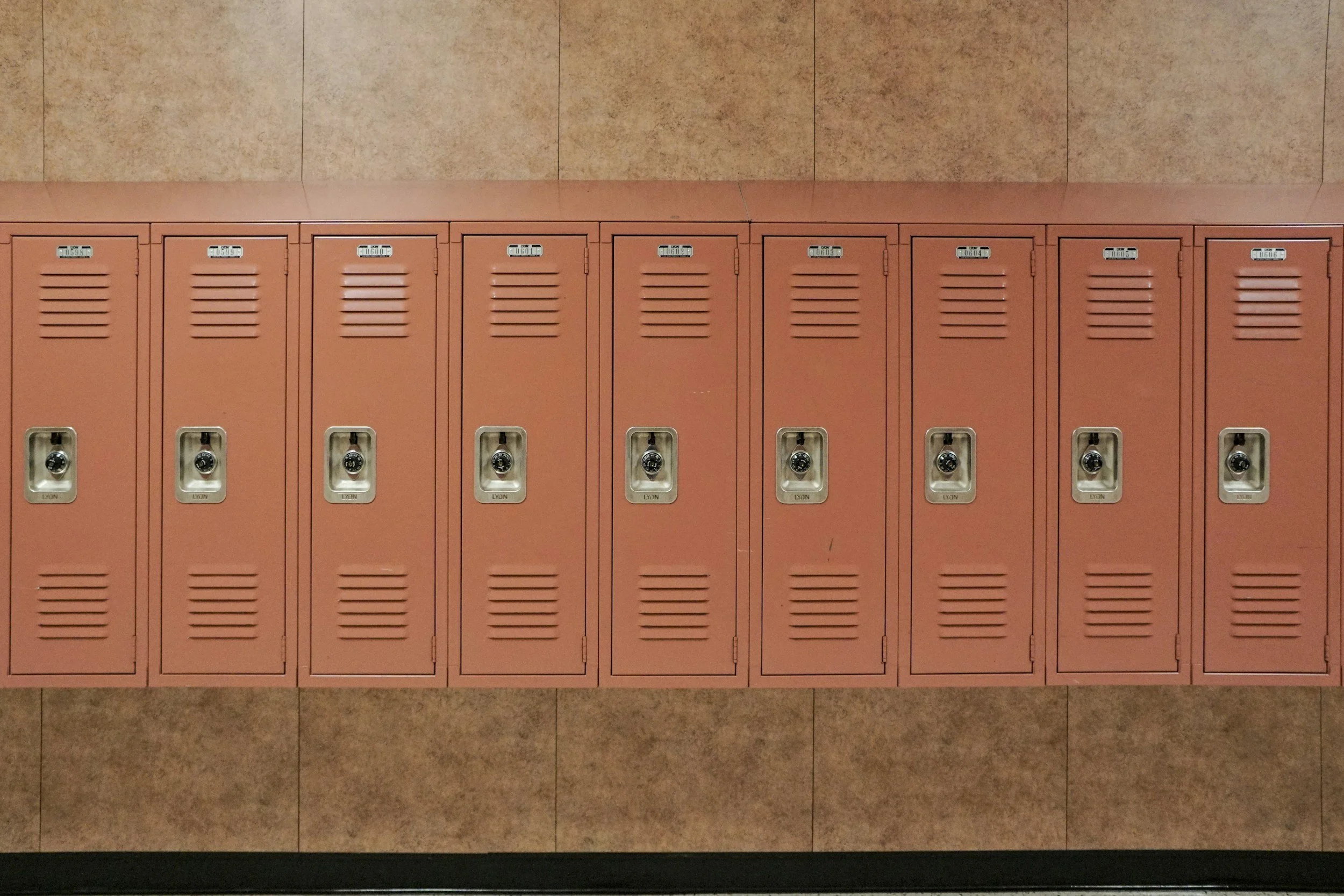Our work.
Below are some of the projects we are most proud of. Check out who has hired us, the work we have completed, and (most importantly) the populations we have served. We also threw in a few sample deliverables for you, too!
SAN DIEGO STATE UNIVERSITY (SDSU) SEXUAL VIOLENCE TASK FORCE
CAMPUS CLIMATE SURVEY ON SEXUAL VIOLENCE
What we did: Reviewed and updated previous campus climate surveys to be more student-centered and equity-minded. Reviewed the changes with the Sexual Violence Task Force and other campus leaders before building it within Qualtrics. Worked alongside campus leadership to develop recruitment strategies, a survey administration schedule, incentive offerings, and other campus-wide efforts to promote participation. Led survey administration and engaged in data cleaning and data analysis. Provided a final written report and presentation. The work in its cumulative form can be found at the SDSU website linked below.
Population we served: Undergraduate and graduate students at SDSU.
Sample deliverable: Whole Report Available at: https://titleix.sdsu.edu/sdsu-publications/sdsu-campus-climate-survey-on-sexual-assault
- - - - - - - - - - - - - - - - - - -
TL;DR: Updated and disseminated a campus-wide sexual violence survey at San Diego State University to better understand student experiences with sexual violence. Worked with campus leaders to design the survey, encourage students to take it, and then analyzed the results to help improve safety and support on campus.
HIGH TECH MIDDLE MESA JUNIOR HIGH SCHOOL
SEXUAL HARASSMENT EDUCATION AND PREVENTION PROGRAMMING AND EVALUATION
What we did: Created sexual harassment prevention training and evaluation for a local junior high school. Met with the school principal to determine programming and evaluation needs. Developed a brief 45-minute sexual harassment prevention and education tool and workbook for students. Topics and activities included: boundary formation and setting, defining sexual harassment, building bystander behavior and confidence, and resource identification. Both the tool and workbook were reviewed and revised based on feedback from the principal and other school stakeholders before implementation to ensure population- and age / developmentally-appropriate examples were utilized. Collected baseline data on student’s knowledge, attitudes, awareness and behaviors on sexual harassment. Served as sexual harassment educators and presented to all 7th and 8th grade classrooms over the course of 2 days. Collected post-workshop data. Analyzed data to determine changes in key metrics from before and after education sessions and provided a written report to stakeholders.
Population we served: 7th and 8th grade students at High Tech Junior High school in San Diego, CA.
Sample Deliverable: https://drive.google.com/file/d/1RxZ0v9nvArkeEnerbnfpHEYbsGDlGlo3/view?usp=sharing
- - - - - - - - - - - - - - - - - - -
TL;DR: Developed a sexual harassment prevention workshop for 7th and 8th graders at a local junior high school. Students learned about setting boundaries, recognizing harassment, and how to step in as bystanders. Surveys were used to assess how students’ knowledge and attitudes changed after the workshop.
SAN DIEGO STATE UNIVERSITY (SDSU) - COLLEGE OF SCIENCES
IMSD STUDENT SUCCESS PROGRAM EVALUATION:
What We Did: Conducted a mixed-methods evaluation of San Diego State University’s (SDSU’s) Initiatives for Maximizing Student Development (IMSD) Program. Met with program leads (e.g., Principal Investigators, Program Manager) to discuss program goals and evaluation needs. Developed a survey based on meeting with stakeholders; final survey included both validated scales and items written by Side of Change Consulting. The survey was administered to program participants. Analyzed quantitative data, checking for reliability and validity, and developed a focus group guide to probe further into participant’s responses, including experiences with the program to determine best practices and areas for improvement. Held the focus group and analyzed qualitative findings. Created a final report and presented overall findings to stakeholders in-person.
Population Served: First-generation, low-income, and / or otherwise historically underserved student populations
Sample Deliverable: https://drive.google.com/file/d/1OAyoikZT5638iuLe8Zw_Qk-SVz5mlUR4/view?usp=sharing
- - - - - - - - - - - - - - - - - - -
TL;DR: This project examined how well a student support program at San Diego State University helped historically underserved students succeed. Surveys and focus groups were used to understand what’s working and what could be improved.
BRIDGE LAB FOUNDATION
CONSULTING AND MEASURE DEVELOPMENT FOR EVALUATION
What We Did: Built a program evaluation for three high schools in San Diego County that utilized the BRIDGE Lab curriculum, and engaged in data analysis processes at baseline, mid-year, and end-year to determine program impact on students and educators. A final report highlighting key outcomes, successes, and areas of improvement were provided to the CEO; this report was transferable to all schools who received the BRIDGE Lab curriculum. After year one analyses were complete, additional evaluation tools and success metrics were created to meet the needs of the CEO and other stakeholders for their priority populations - including an expansion of programming for students in different developmental stages (elementary school, junior high, high school) and program recipients (e.g., students, parents, teachers). This set the BRIDGE Lab Foundation up for success in creating evidence-based multi-year outcomes as their program was provided to multiple cohorts and populations.
Populations Served: Teachers and students in the K-12 pipeline; parents of participants.
Sample Deliverable: https://drive.google.com/file/d/1zHbUSNmddz2KGMws09gfJt1wGHkn6qKp/view?usp=sharing
- - - - - - - - - - - - - - - - - - -
TL;DR: Assessed how well the BRIDGE Lab curriculum was working in schools by measuring student grades, attendance, and emotional skills before, during, and after curriculum delivery via surveys. Results were used to help improve the program for students, parents, and teachers.




